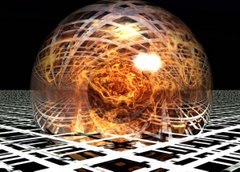
Charles Darwin ranks as one of the greatest scientists in history. His theories have changed the world and how people view it. Unfortunately many of the ideas still associated with him are wrongly attributed. His ideas have caused conflict in many aspects. Although he was the founder of the evolutionary theory, he never used the word evolution to explain his theories. Charles Darwin is best known for his book The Origin of the Species by Means of Natural Selection. The idea of evolution was not new when Darwin published his book; Aristotle and Lucretius spoke of species not being created whole and perfect by God at the genesis of life on Earth. He established three fundamental premise’s in his book. One is that all organisms produce more offspring than can possibly survive. The next premise is that there is significant variation amongst offspring; they are not all carbon copies of one immutable type. The last premise is that at least some of the variation found in the offspring gets passed on to the next generation and to generations beyond. Charles Darwin explained descent with modification and survival through natural selection. In his travels to the Galapagos Islands, a group of volcanic islands nine hundred kilometers west of South America, he began to study the finches he found there. Since the islands are volcanic, all life must have been introduced. He decided that a flock of finches must have strayed off of the mainland and found there way to the islands, over time they developed differences in their behavior and in the shape of their beaks. The food available throughout the islands would contribute to these differences. This is an example of adaptive radiation, the development of several species from a common ancestor introduced into a new environment that presents opportunities as well as problems. Darwin used the metaphor of a tree with multiple branches from a common trunk. Natural selection is when the population becomes better adapted to survive, or successfully reproduce, in their particular environment. The environment selects the better suited individuals to survive. There are many evidences that can support the evolutionary theory. One evidence is homologous structures found in organisms. These are structures with the same embryological origin due to a shared ancestry. Another example is vestigial structures, or a structure that is reduced in size and has marginal or little use. There are molecular homologies, which are similarities in DNA and protein of related organisms. Also looking at the geographical distribution of species is a good support for the evolutionary theory. One example of this is the marsupials in Australia, there are many of them there and only one other marsupial in the world, in North America. Convergent evolution is the independent development of similar characteristics between unrelated species; this is a result of natural selection and similar ecological roles. You can see this in the sugar gliders in Australia, which are marsupials, and the flying squirrel in North America, which is a placental mammal. Both of these organisms have the skin between their limbs to help them glide. This is just one example, although there are many cases such as this. One other evidence used to support the evolutionary theory is the fossil record. Ninety percent of the fossils we have found are extinct species. The fossils confirm appearances of major groups in geologic history. The creationism theory is the literal belief in the account of creation given in the Book of Genesis. Creationism denies the theory of evolution of species. There are many levels of creationists, from the extreme creationists to the less literal believers. Creation theology is the origin belief that humans, life, the Earth, and the universe were created by a Supreme Being or deity’s supernatural intervention. Extreme creationists believe that every species that is extant today were created at the same time and there has been no modification. Creationism can be considered a religious metaphysical theory. Creation science is a pseudoscientific theory that is incompatible with the big bang theory and the evolutionary theory, although there are people that have mixed the two theories to coincide.



No comments:
Post a Comment